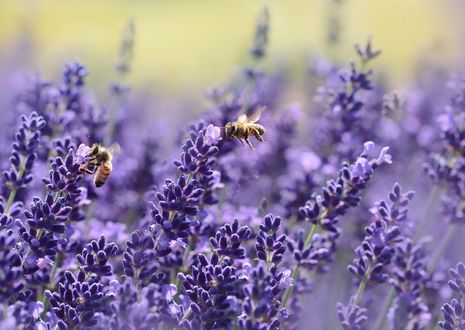How evolution fights epidemics with altruism
Quim Baixeras Buye discusses how microbes, ants and primates (amongst others) have learnt to deal with disease and protect themselves from harm using just one vital, evolved trait: altruism.

In recent times we have become acutely aware of the devastating effects of infectious diseases on human life. Less publicized, however, are diseases affecting wild animal populations, which have played a central role in the extinction of many species. As such, disease plays a vital role in the ecology and evolution of animals and understanding its spread is crucial for the preservation of the world’s biodiversity. Social animals, with their tight communities and genetically homogenous groups, are at particular risk of succumbing to disease. To protect themselves, primates and social insects have evolved a collection of behaviours that minimize the risk and severity of infection. These can be preventative, such as grooming in primates, or active, such as social fever in honeybees, during which the temperature of the hive during bacterial infection is raised by the coordinated action of the individual bees. These behaviours form what is called social or collective immunity.
Animals like honeybees and ants, with their complex social structures and long-lasting nests, are often taken as model organisms to study social immunity. They can fall victim to a variety of parasites, be they fungus, bacteria, virus or smaller insects. These parasites and their hosts have coevolved in an evolutionary arms race leading to amazing examples of cooperation within the colony. For example, the smallest caste of the leaf-cutting ants will hitchhike on the leaves transported to the colony by the larger workers and thereby prevent flies from laying eggs on them. Uptake of parasites into the colony is similarly prevented in honeybee nests by having specialized bees guarding the entrance. Returning workers showing signs of infection will be barred entry. This behaviour must have been selected for at the level of the colony, as it is obviously detrimental to the individual. In this way, social insects avoid infection by preventing the parasite’s entry into the nest altogether.
Even if a parasite does enter the nest, the hosts will attempt to prevent its establishment. One way this is done is through cleanliness. Ants, termites and wasps will coat their nest walls with antibacterial secretions and rapidly remove corpses from inside the nest. This prevents the growth of fungi and bacteria. In another case, African honeybees prevent the establishment of the small hive beetle by driving the parasite into a corner and encapsulating it with propolis, or ‘bee glue’. This process can take up to days and involves multiple bees cooperating to build the wall and ensure the beetle does not leave during its construction. Researchers have found sealed crevices with up to 200 individuals, with evidence of cannibalism between the beetles. European honeybees lack this behaviour and the small hive beetle can often lead to the collapse of the entire hive. Overall, it is the dedication of time by the colony to the task of cleaning and guarding against parasites that prevents their establishment.
“One hopes that we learn from animal’s social immunity that the most natural response to an epidemic is altruism.”
If a parasite manages to establish itself within the nest, measures will be taken to minimize its spread and severity. Termites infected by fungus will signal to their peers not to approach them by hopping and bouncing erratically against the nest walls. In extreme cases, they might prompt their peers to encapsulate them to prevent the spread altogether. Ants will also implement their own version of social distancing, limiting contacts within castes. This localizes the infection to only a region of the nest, thereby protecting the queen. In one ant species, ants will heavily groom those exposed to the fungus. This spreads the fungus spores among the colony, lessening the severity of infection and priming the individual’s immune system against the illness. This comes at a high risk to healthy individuals but serves to lower the overall threat to the colony. Altruism towards their peers is ultimately at the core of many of these social strategies. By cooperating to limit the spread, severity, establishment and uptake of parasites, social insects can avoid the worst effects of disease.
Collective immunity is not limited, however, to insects. Primates will frequently groom one another, for both social bonding and hygienic purposes. In the sea, cleaner shrimp and fish congregate to form cleaning stations, where they then feed on parasites of larger animals. These collectives are wonderful examples of interspecies cooperation. Microbes, themselves often the target of social immunity strategies, also exhibit collective immunity. When bacterial Staphylococcus aureus colonies are challenged with antibiotic gentamicin, some individuals begin to respire anaerobically. This reduces the pH, rendering the drug ineffective towards the whole colony. These bacteria incur a large cost to themselves in order to confer immunity to those that didn’t change their metabolism. Strategies to prevent and fight disease are general and can be found in social species ranging from microbes to the great apes.
Behaviours contributing to collective immunity have been selected for by evolution to suit the particular parasites in the host’s environment, but human activity is upsetting this delicate balance. By introducing diseases to new locations and encroaching on animal habitats we are increasingly putting species at risk of extinction. In Hawaii, avian malaria carried by the non-native mosquito has been one of the driving factors for the extinction of many bird species. In North America, the small hive beetle is partly responsible for the falling population of honeybees. The increasing closeness between urban centres and wildlife is sure to produce future outbreaks of disease. During these, one hopes that we learn from animal’s social immunity that the most natural response to an epidemic is altruism.
 News / Cambridge academics stand out in King’s 2026 Honours List2 January 2026
News / Cambridge academics stand out in King’s 2026 Honours List2 January 2026 Interviews / You don’t need to peak at Cambridge, says Robin Harding31 December 2025
Interviews / You don’t need to peak at Cambridge, says Robin Harding31 December 2025 Comment / What happened to men at Cambridge?31 December 2025
Comment / What happened to men at Cambridge?31 December 2025 News / AstraZeneca sues for £32 million over faulty construction at Cambridge Campus31 December 2025
News / AstraZeneca sues for £32 million over faulty construction at Cambridge Campus31 December 2025 Features / “It’s a momentary expression of rage”: reforming democracy from Cambridge4 January 2026
Features / “It’s a momentary expression of rage”: reforming democracy from Cambridge4 January 2026










